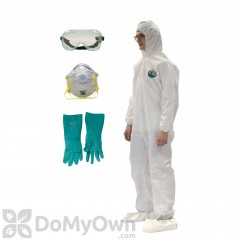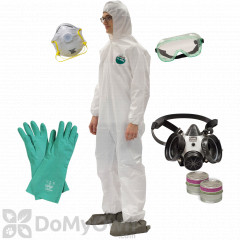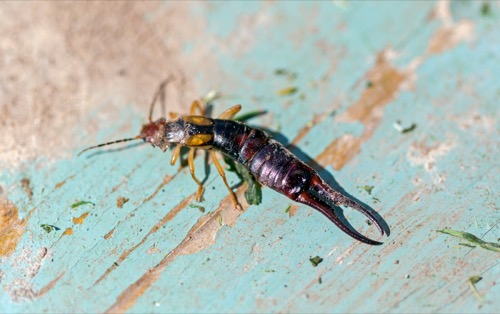
Earwigs, often called pincher bugs, are a nuisance pest insect that sometimes make their way into homes or offices. Earwigs are omnivorous and will eat whatever they can find, including smaller insects, fungi, and algae, but prefer decaying plants found on the ground.
Though their presence inside a home or business is unpleasant to all, earwigs only pose a danger to flowers, leaves and vegetables--especially young plants. They are small, fast-moving, and have pincers that can look scary, despite their harmlessness to humans.
Learn to identify earwigs and what steps to take when you find them.
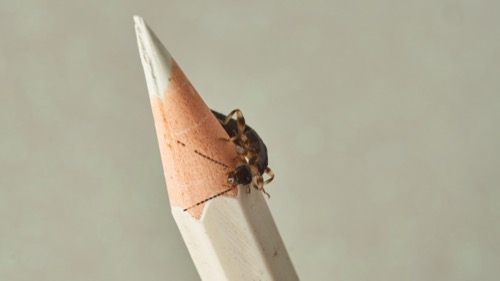
Earwig adults are generally just over a half-inch long, with antennae on their heads and pincer appendages called cerci extending from their abdomen (lower body). Most earwigs are about the same length as the lead tip of a pencil.
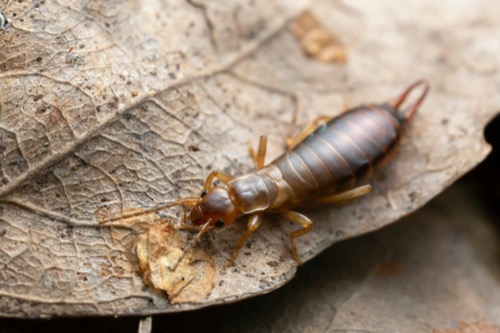
Earwigs have narrow, flat bodies that are much longer than they are wide. In addition to the standard antenna and six legs shared by most insects, earwigs have pincers, also called cerci, at the tip of their abdomen.
The pincers of male earwigs are stronger, curved, and set farther apart at the base of the abdomen. Female earwigs have straighter, more narrow pincers that are closer set.
Many types of earwigs have neatly folded wings that are often tucked away against their body in a very efficient manner but can be spread out for flight when need be. Other varieties of earwigs are wingless and flightless.
Most adult earwigs are reddish-brown in color. Younger earwig nymphs will often be lighter in color.
Earwig eggs are oval shaped and white or off-white colored.
Earwigs can be found across the United States but are most commonly found in the southern and southwestern states.

